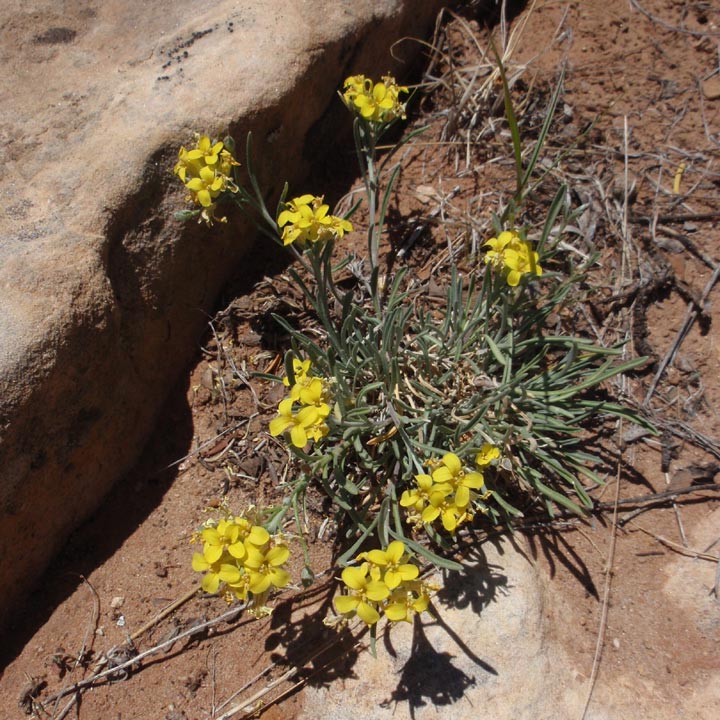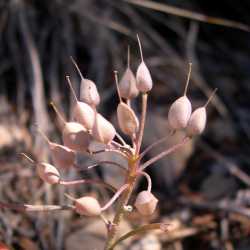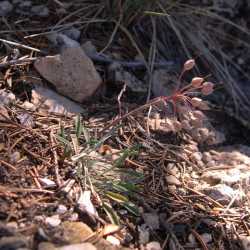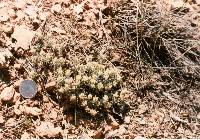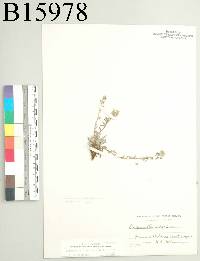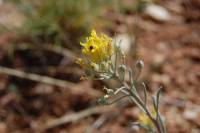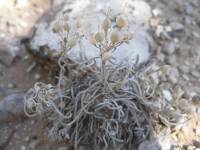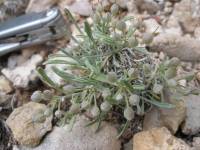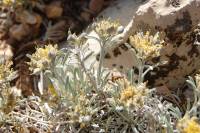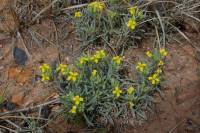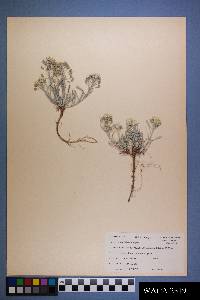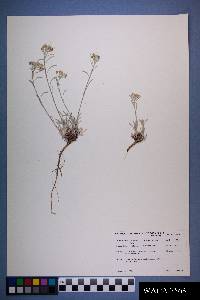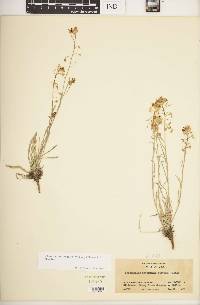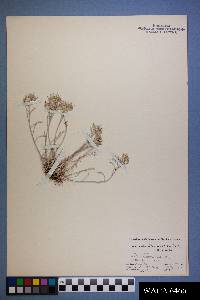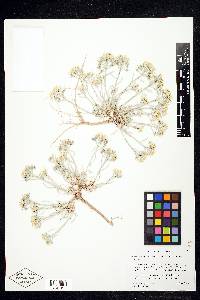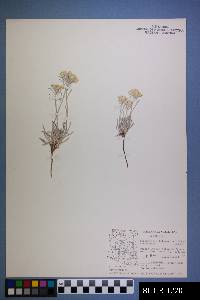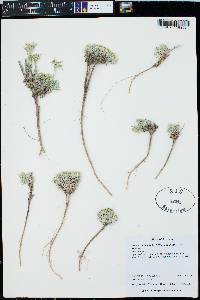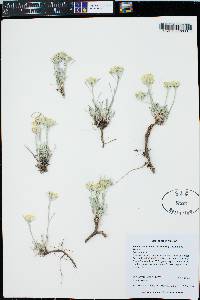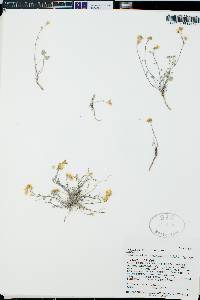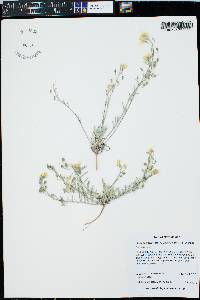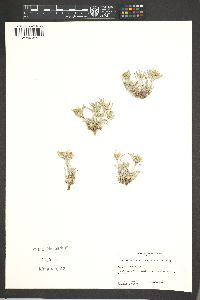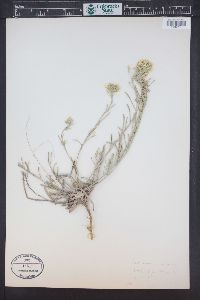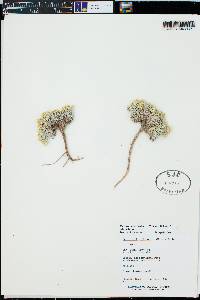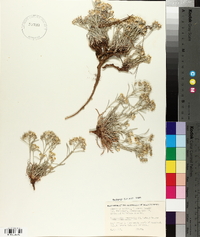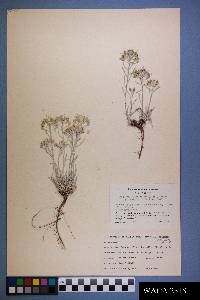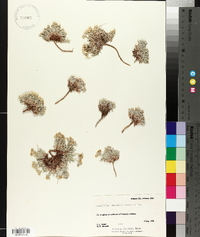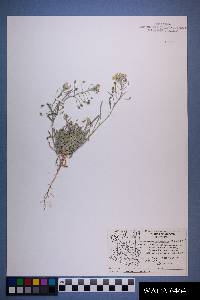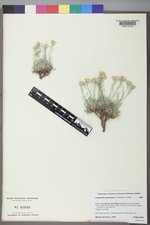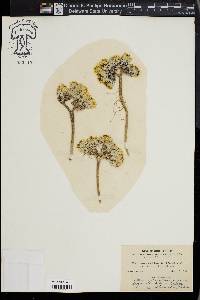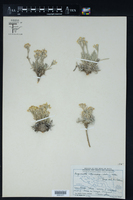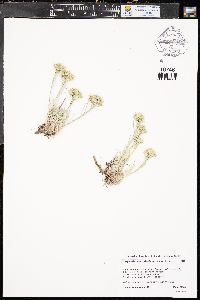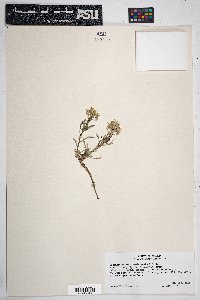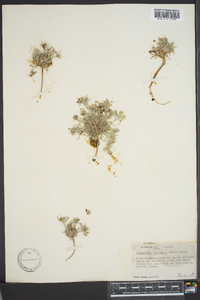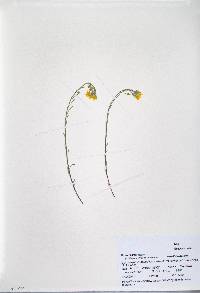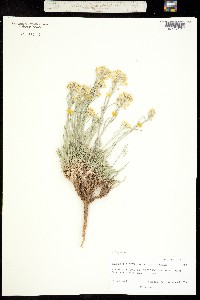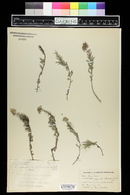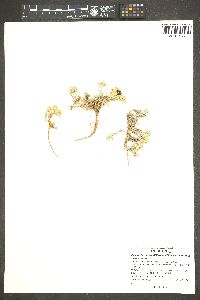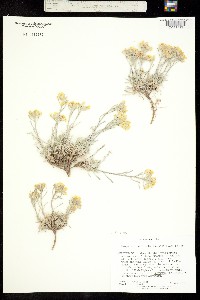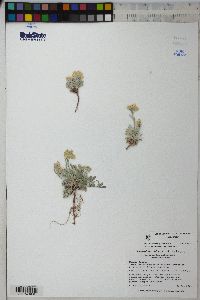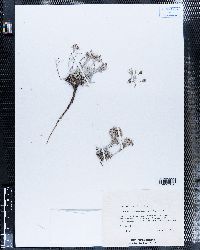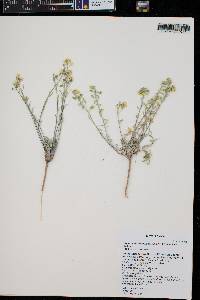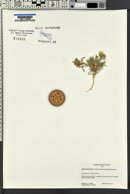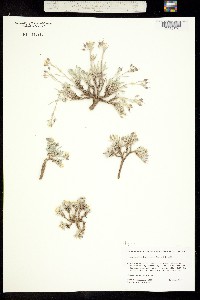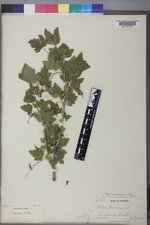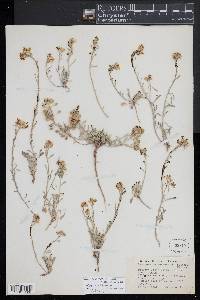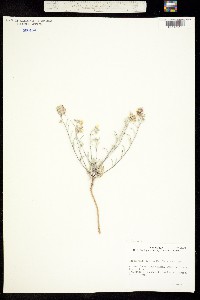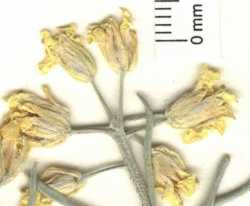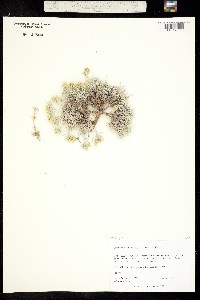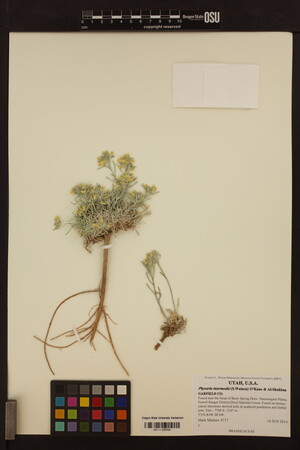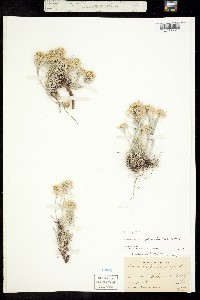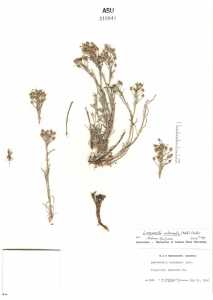Physaria intermedia
|
|
|
|
Family: Brassicaceae
mid bladderpod, more...Santa Fe Bladderpod, Santa Fe bladderpod
[Lesquerella alpina var. intermedia S.Watson, moreLesquerella intermedia (S. Wats.) Heller] |
Perennials; caudex (buried), branched, (thickened with per- sistent leaf bases, cespitose); densely pubescent (usually grayish-green), trichomes (sessile or short stalked, spreading), several-rayed, rays furcate or bifurcate, slightly fused at base, (tuberculate or finely tuberculate). Stems several from base, erect to decumbent, (unbranched, stout, densely leafy sterile shoots sometimes present), (0.5-)4-2.5 dm. Basal leaves (clustered at stem base); blade linear to linear-oblanceolate, 2-5 cm, margins entire, usually involute, sometimes flattened, (apex obtuse to subacute). Cauline leaves: blade linear-oblanceolate to linear, 1-3.5(-4.5) cm, margins entire, usually involute. Racemes compact, (often nearly subumbellate). Fruiting pedicels (often expanded distally, ascending or recurved, usually straight or slightly curved, rarely nearly sigmoid), 4-15 mm, (stout). Flowers: sepals (yellowish or greenish yellow), ovate or oblong, 4.5-7.5(-9) mm, (lateral pair sometimes cucullate, median pair tapering at both ends, thickened apically, cucullate); petals spatulate or oblong, 6.5-10.5(-15) mm, (base sometimes widened, apex rounded or retuse). Fruits (sessile or substipitate), subglobose to slightly ovoid, usually inflated, rarely compressed or obcompressed, 4-6(-10) mm, (apex acute, slightly flattened); valves sparsely pubescent, trichomes appressed; ovules (8-)12-16(-20) per ovary; style (2-) 3-4.5(-5.5) mm. Seeds flattened. 2n = 18, 20, 36. Flowering Apr-Aug. Dry sandy, gravelly, or rocky soil, claylike hillsides, open chiprock, dry stream beds, gravel bars, open knolls, open pinyon-juniper woods, open stands of sagebrush, Gambel oak or ponderosa pine communities, calcareous substrates; 1600-2400 m; Ariz., N.Mex., Utah. N. H. Holmgren (2005b) pointed out that the lectotype and other material from New Mexico, where Physaria intermedia is very infrequent, is quite similar to P. parvula from northern Colorado and northeastern Utah; it is also quite similar to, but less robust than, P. pulvinata from southwestern Colorado. The material from Arizona, northwestern New Mexico, and Utah may represent an unnamed taxon; further study is needed.
FNA 2010, Kearney and Peebles 1969, McDougall 1973 Duration: Perennial Nativity: Native Lifeform: Forb/Herb General: Herbaceous perennials growing in dense tufts, to 25 cm tall, stems much-branched and several from base, erect to decumbent, stout and thickened with persistent leaf bases, densely leafy sterile shoots sometimes present, surfaces densely pubescent and usually grayish-green, stellate-pubescent throughout, plants with pungent, watery sap, the caudex below ground. Leaves: Alternate, basal and cauline; basal blades linear to linear-oblanceolate, 2-5 cm long, margins entire, usually involute but sometimes flattened, apices obtuse to subacute, the basal leaves clustered at stem bases, cauline leaves with linear-oblanceolate to linear blades 1-4.5 cm long, with entire and usually involute margins. Flowers: Yellow, bright and relatively large and showy, fragrant, with 4 petals forming a cross, petals spatulate or oblong, 6.5-15 mm long, bases sometimes widened, apices rounded or oblong with a shallow notch (retuse), sepals 4, free, erect or spreading, yellowish or greenish yellow, ovate or oblong, 4.5-9 mm long, lateral pair sometimes hooded (cucullate), median pair tapering at both ends, hooded and thickened apically, stamens 6 with 4 long and 2 short, anthers ovate to narrowly oblong, ovary solitary and superior, ovules 8-20 per ovary, generally 2-chambered with a septum connecting 2 parietal placentas, styles solitary, persistent, 2-5.5 mm long, flowers borne in crowded, compact, umbel-like racemes at branch tips. Fruits: Oval or ovate to subglobose siliques dehiscent into 2 valves and a septum, usually inflated, rarely compressed or obcompressed, 4-10 mm long, apices acute and slightly flattened, valves sparsely pubescent with appressed hairs (trichomes), fruits crowded, Ecology: Found on calcareous substrates, dry, sandy, gravelly, or rocky soils, on claylike hillsides, open chiprock, dry stream beds, gravel bars, open knolls, open pi-on-juniper woods, and open stands of sagebrush, Gambel oak or ponderosa pine communities, from 5 Distribution: Arizona, Colorado, New Mexico, Utah. Ethnobotany: Specific uses for this species are unknown, but other species in the genus have uses. Synonyms: Lesquerella alpina var. intermedia, Linnaeus intermedia Editor: LCrumbacher2012 Etymology: Physaria comes from the Greek phusa or physa, "bellows" because of the inflated pod, and intermedia means intermediate, indicating an observation that a species was probably considered as being halfway or partway between two others with regard to some particular characteristic, e.g. tall, short, and "intermediate". |
|
|
|

